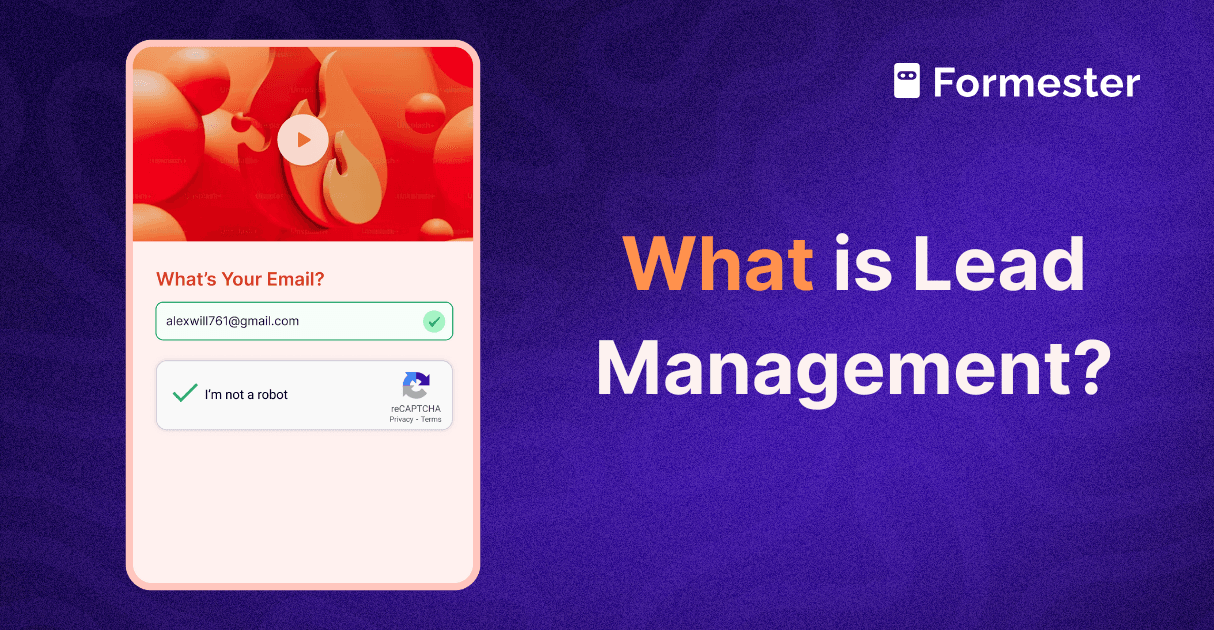The ultimate guide to lead management

Leads are the lifeblood of any business. They represent potential customers who show interest in your product or service. However, merely gathering leads is not enough. Without a clear lead management process to track and organize leads, you may lose important sales opportunities.
This is where a strong lead management system comes in. The right lead management tool ensures no lead slips through the cracks. It helps you qualify leads, nurture them with timely communication, and guide them smoothly through the sales pipeline. Done well, lead management shortens the sales cycle, increases revenue, and strengthens customer relationships.
What is Lead Management?
Lead management is the process of capturing and tracking potential customers. It guides them step by step through the customer journey until they are ready to buy. Think of it as a link between your marketing campaign and your sales process. This ensures every prospect gets the right attention at the right time.
The role of lead management in sales and marketing
In marketing, it helps attract the right audience. It generates leads through social media or ads. It also prepares prospects for the sales team.
In sales, it ensures that reps focus only on qualified leads, which reduces wasted effort and boosts conversion rates.
Common challenges without lead management
Spreadsheets or emails cause leads to get lost.
Sales teams spend time chasing unqualified leads.
Potential customers lose interest if you delay follow-ups.
Misalignment between sales and marketing creates friction and missed opportunities.
The Lead Management Process Explained
Lead generation
This is where it begins. You attract potential customers through multiple channels like content marketing, social media, paid ads, webinars, referrals, or partnerships.
Lead capture
Once you have attention, you need to collect details. Tools such as landing pages, lead capture forms, and chatbots make capturing leads faster and easier. A smooth capture process increases your numbers.
Lead enrichment
Leads often come with incomplete data. Lead enrichment adds valuable details such as industry, company size, or recent activity. This makes it easier for your sales team to understand and prioritize them.
Lead scoring and qualification
Not every lead is worth the same effort. Lead scoring assigns points based on engagement, demographics, and fit. This allows you to qualify leads properly and direct sales resources where they matter most.
Lead distribution
Once qualified, the team should assign leads to the right sales reps. You can base distribution on geography, product or service type, or availability. This keeps the sales pipeline moving quickly.
Lead nurturing
Many prospects are not ready to buy immediately. Nurturing leads with personalized emails, content, or follow-ups builds trust. Effective lead nurturing helps keep them engaged until they’re ready to convert.
Lead conversion
This is the turning point in the sales cycle where a prospect becomes a paying customer. A seamless handoff between marketing and the sales team is critical here.
Post-conversion follow-up
Even after the sale, staying in touch is important. Post-conversion follow-up builds loyalty, encourages upsells, and generates referrals.
Key Components of a Lead Management System
A reliable lead management software or CRM should include:
A centralized lead database to store and share information.
Automation workflows to streamline follow-ups and reminders.
Lead scoring models for smarter prioritization.
Reporting dashboards to analyze results.
Sales pipeline visualization tools.
Omnichannel engagement across calls, email, and social media.
Best Practices for Lead Management
Align your sales team with marketing to ensure shared goals and smooth handoffs.
Keep lead data clean to avoid duplicate records.
Use personalized communication instead of generic outreach.
Segment and qualify leads based on intent and behavior.
Automate processes with the right management tools, but balance it with a human touch.
Track KPIs like response time, lead quality, and conversion to optimize your lead management system.
Lead Scoring Techniques and Strategies
Lead scoring is the process of ranking leads based on their likelihood to convert. This ensures your sales team spends time on the most promising potential customers.
Common criteria for lead scoring
Demographics such as job title or company size.
Behaviors like webinar attendance or content downloads.
Engagement like email opens or website visits.
Fit with your ideal customer profile.
Examples of scoring models:
Points-based scoring, where specific actions add up to a score.
Threshold scoring, where a lead becomes sales-ready at a certain score.
Negative scoring, where disengaged behaviors reduce the score.
Over time, adjust your scoring model based on closed-won and closed-lost data to keep it accurate.
Tools and Technologies for Lead Management
Popular lead management software includes HubSpot, Salesforce, and Zoho CRM. These management tools streamline every step of the lead management process.
When choosing a lead management tool, look for features such as:
Automated lead capture and qualification
CRM integration
Pipeline visualization
Detailed analytics
Seamless integration with your marketing campaign tools
AI and automation make it easier to predict which leads are worth pursuing and suggest the next best action. Integrating with sales and marketing platforms ensures a consistent customer journey.
Common Mistakes to Avoid in Lead Management
Many businesses struggle by delaying follow-ups, which reduces conversion chances. Others fail to maintain data hygiene, leading to duplicate or outdated records.
Another mistake is skipping proper lead qualification, causing sales teams to waste time. Misalignment between sales and marketing also creates gaps in the process.
Finally, some companies rely too much on automation, which can feel impersonal. Balancing automation with personal touches is key to nurturing leads effectively.
Measuring Success in Lead Management
Key metrics to track include conversion rates, lead velocity, and response times. Reports help identify which marketing campaigns generate the best leads and where prospects drop off in the sales cycle.
By analyzing data, you can refine your strategy, strengthen your sales process, and continuously improve how you qualify leads.
Scaling Your Lead Management System
As your business grows, the volume of leads will increase. Preparing workflows and automations in advance keeps your system efficient.
To scale, segment workflows for different industries or company sizes and customize nurture paths. This ensures every potential customer receives relevant communication while keeping your sales pipeline strong.
Conclusion
Lead management is more than just organizing contacts. Management is the process of guiding leads from the first touchpoint to conversion and beyond. With the right lead management software, sales teams can capture leads. They can qualify them quickly and move them smoothly through the customer journey.
When you follow best practices, use the right management tools, and connect sales with marketing, you can grow faster. This also helps you build better relationships with customers. Start today by refining your lead management tool and building a sales process that truly converts.

